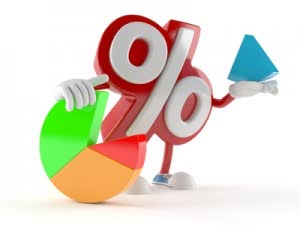Dividend Value Builder Newsletter
– Discover, Compare, and Evaluate Dividend Stocks Without Emotional Bias –
(Intrinsic Value Analysis For Over 300 Stocks)
Operating Earnings Yield (OEY) : Operating Income / Market Capitalization
Operating Earnings Yield is a profitability and valuation ratio; one of my favorite for company stock analysis. This metric tells you (in percentage %) how much operating earnings the company is producing compared to the current stock price.

Operating Earnings Yield (OEY) Calculation
Operating Earnings Yield = Operating Income (Earnings or Profit) / Market Capitalization
where:
Operating Income = Gross Profit (Revenue – Cost of Goods Sold (COGS)) – Operating Expenses – Depreciation & Amortization
Market Capitalization = Price x Numbers of Shares Outstanding
Note: Operating Income, Operating Earnings, and Operating Profit are used interchangeably. The terminology Y-Charts uses is operating income, so that is what I use.
What is Operating Income?
Operating income is the earnings or profit earned from a company’s core business operations. This declares the profits that come directly from operations and does not include financing costs (interest), income taxes, or any other profits or losses from non-core business transactions.
Is Operating Income (Earnings) the Same as EBIT?
You might find that some analysts use operating income (earnings) and Earnings Before Interest & Taxes (EBIT) interchangeably; this is incorrect. Both metrics measure profitability before interest and taxes, but EBIT includes non-operating profits and losses. For example if a company sells an asset (i.e building or equipment) the profit or loss would be included in EBIT but not in operating income.
Example:
Company ABC manufactures furniture:
Revenue = $100
Cost of Goods Sold = $30
Operating Expenses = $5
Depreciation & Amortization = $5
Gain from selling Land = $10
Stock Price = $5
Number of Shares Outstanding = 100
Operating Income = $100 (revenue) – $30 (COGS) – $5 (operating expenses) – $5 (D&A) = $60
EBIT = $100 (revenue) – $30 (CoGS) – $5 (operating expenses) – $5 (D&A) + $10 (land) = $70
Operating Income provides us an important metric because we know how much profit the company’s core business is generating. We ignore the profit from the land because that is an occasional (one-time) profit (or loss) that would give us false information for analysis of company operations.
Matching Market Capitalization With Operating Income
Now we want to find out how much we have to pay for this profitability (operating income); so we compare this number to the price of the stock to give us a financial ratio.
Remember, market capitalization is the price of the stock times the number of shares of the company has outstanding. This gives us the total market value of the company.
Now we take the total operating income and divide it by the Market Capitalization (total market value of the company) to give us our operating earnings ratio (or yield).
From our example above, ABC company:
Market Capitalization = Stock Price x Shares Outstanding
Market Capitalization = $5 X 100 = $500
Operating Earnings Yield (OEY)
The operating earning yield discloses, in a percentage, the amount of operating income the company is making for each dollar of investment at the current stock price.
Example:
$60 (operating income) / $500 (market cap) = 12%
A 12% OEY indicates the company is generating operating income equal to 12% of the price of the stock. Obviously, higher ratios are preferable to lower ratios.
Interested in Dividends?
This is one of my top five metrics for stock evaluation because it provides insight into operational profitability and combines it with valuation to tell you something really important: How much your paying for each dollar of operating income from the core business of a company for that time period.
We combine key metrics from each part of company financial statements and use the most important metrics and ratios to develop a total score. These analyses have helped us successfully find stocks that offer greater upside with lower risk than the average stock.
Related Reading:
Intrinsic Value Stock Analysis – My Formula
Minimize Large Portfolio Drawdowns
Invest With Confidence in Less Time - Manage Your Portfolio Without Behavioral Errors
